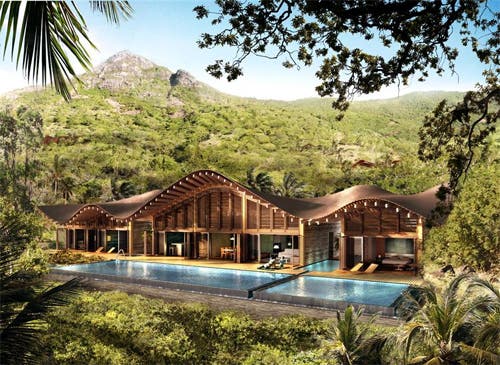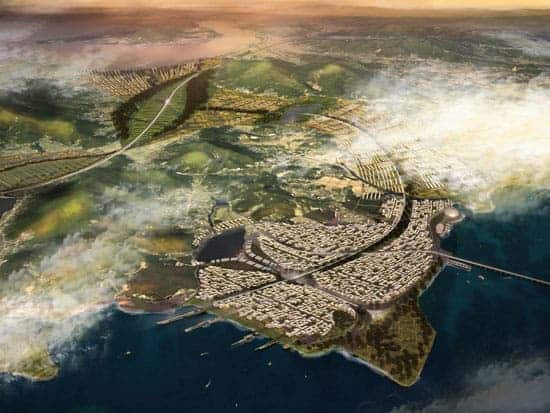
The leading architectural firm Foster + Partners has recently won an international competition in which companies where supposed to come up with schemes towards developing the Incheon Free Economic Zone. Foster’s plan, the winning plan, is incredibly bold, encompassing the islands of KangHwa and OnJin-gun, to the north west of Seoul, basically connecting the the two feuding countries together. A huge project, billions of dollars and a fine stretch of land separating the two totally different countries. North and South, communism and capitalism – one bridge to fill the gap.
Oh, and it’s a pretty freakin’ long too! The longest in the world according to Foster’s press release and initial, very calculated, assessments. What really seems interesting though is the whole scale of the project, which will entirely revolve on the concept of total self-sustainability. The 300 square-kilometre masterplan will extend organically from a central transportation spine, creating a centre for green industry and serving a population that is expected to grow from 35,000 to 320,000 residents and commuters.
There will be three main sites within the free trade zone of Incheon: the north of Kanghwa will be a centre of inter-korean economic cooperation, taking advantage of its strategic location close to Incheon airport and North korea, while the south of the island will be mixed-use, combining green technology industry with community, cultural and residential buildings.
When the project will be complete, the Incheon area will become the leading national, and quite possibly south-east Asian, landmark for the sustainability industry, manufacturing photovoltaic panels and wind turbines, and developing new products and technology within a new research and development institute in the south of KangHwa. State-of-the-art measures employed within the masterplan include biomass energy generation, the use of hydrogen fuel cells and hydroponic roofs. OnJin-gun island will be transformed as a sustainable resort and the masterplan will eventually connect South to North Korea and the airport via the world’s longest bridge.

From a design point of view, like we can plainly see from the 3D modeled photos, it all looks amazing! The center theme for the Incheon project is agriculture and green living, taking inspiration from the current situation of the area, the Incheon landstrip being a monstly rural, rugged area. Foster wants to preserve this by incorporating existing elements such as irrigation channels, green spaces and roads, while the arrangement of buildings within the masterplan follows the natural topology of the site, incorporating green roofs to further harmonise with the landscape. Like the veins of a leaf, the smaller roads and pedestrian avenues extend from the central transportation spine. There will be no structure above 50 metres, so the scheme will not extend into the foothills or mountain, thus preserving the rural landscape.
“Working at a very strategic level, we saw the masterplan as an opportunity to explore the sustainable potential of this extraordinary island, exploiting its pivotal position close to Seoul and its rugged landscape. We are delighted that the judges share our vision and, along with our collaborators at A+U, PHA and MIC, we hope to develop the project into the next stage,” said Grant Brooker, a design director at Foster + Partners.
This massive scheme layed out by Foster and Partners will require a slated 10-15 years worth of developing time. The whole thing looks superb though, and I, personally, am dying to learn more about it. A few more pics bellow.
via Foster + Partners [pics via Design Boom]




